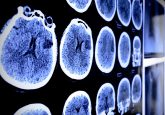Call for papers: Matrix effects in the bioanalysis of large molecules by ligand-binding assaysCall for papers: Matrix effects in the bioanalysis of large molecules by ligand-binding assays

Author: Evgenia Koutsouki
Bioanalysis is delighted to announce that the April 2014 issue will be a special focus on “Matrix effects in the bioanalysis of large molecules by ligand-binding assays” guest edited by Dr Binodh De Silva (Bristol-Myers Squibb) and Dr Fabio Garofolo (Algorithme Pharma).
The end point of any bioanalytical measurement is obtaining an accurate result of an unknown sample assayed against its representative standard. The accuracy of a measurement is also referred to as “closeness of the measured result to the true value” (Findlay et al., Journal of Pharmaceutical and Biomedical Analysis, 21 (2000) 1249–1273).
Ligand-binding assays (LBAs) are routinely used in the quantification of biotherapeutic drug candidates in biological matrices. Generally, LBAs measure the therapeutic without an extraction step, in comparison to mass spectrometric methods. The accuracy of this measurement is dependent on the specificity of the binding reagent (i.e., antibody, receptor, ligand etc.). Specificity is the ability of the reagents to bind to the analyte of interest. Specificity can be specific or non-specific. The non-specific specificity, i.e., Selectivity, is the ability of an analytical method to distinguish the analyte in the presence of other constituents in the matrix. Selectivity is often termed matrix effect. Understanding and assessing the selectivity and specificity of an analytical method is critical to the generation of accurate results.
During method development and validation, it is essential to evaluate the cross-reactivity (specificity) of the reagents against biotransformed products of the analyte, soluble receptors existing in circulation, endogenous species, other binding proteins etc. This evaluation may lead to understanding the measurement characteristics, such as “free” and “total” concentrations of the analyte which in the end is important to interpret the accuracy of the data and the application of them.
Evaluating and eliminating the interferences from non-specific matrix components in a LBAs is not trivial. The differences in the matrix effects may differ from normal to patient populations. Inter-subject variability can also be higher given that a separation step is not used in these assays. Biotherapeutics have the potential to elicit an immune response against the therapeutic which complicates the assay systems further. The effect of anti-drug antibodies and the impact on the quantitative measurement of the therapeutic needs to be established and evaluated
Guest edited by two internationally recognized experts in the bioanalytical field, Dr Binodh De Silva (Bristol-Myers Squibb) and Dr Fabio Garofolo (Algorithme Pharma), this special issue will encourage publications on the practical considerations for assessing selectivity (matrix effect) and specificity in LBAs, innovative bioanalytical technologies and comparisons with orthogonal methods.
The timelines for this issue are as follows:
• Publication date: April 2014
• Deadline for submission of first drafts: 15th November 2013
The special focus issue welcomes the submission of reviews, perspectives, commentaries and research articles – we would be delighted to discuss your ideas. For more details, please refer to the author guidelines.
If you or your colleagues are interested in contributing, please do get in contact – I would be delighted to hear from you.
I look forward to hearing from you.
Kind regards,
Evgenia Koutsouki






